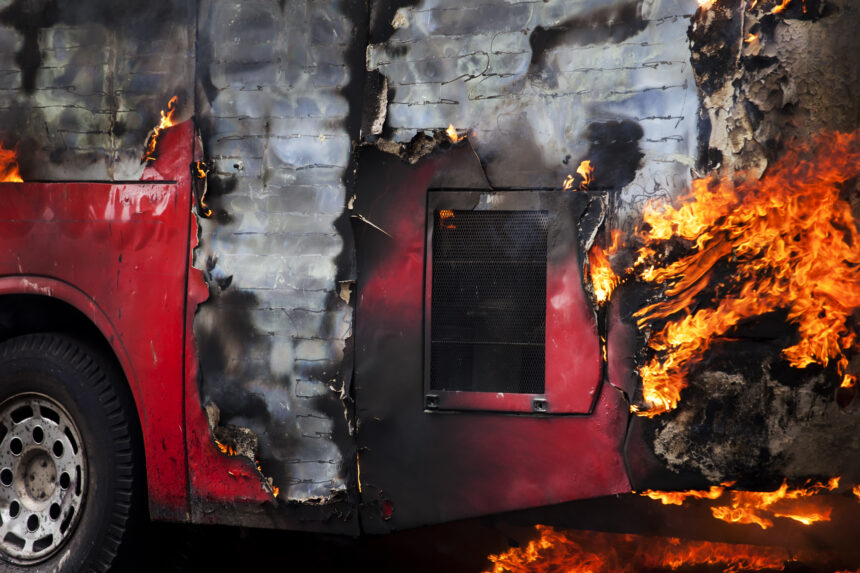The drastic consequences of fire are well known. Fires on vehicles such as buses and coaches put lives at risk and it’s often difficult for the driver to detect a fire on his vehicle.
The engine compartment is located at the rear of the bus or coach, where the driver’s visibility is obscured, which can mean that if a fire starts it goes undetected until it has caused a large amount of damage and can be seen billowing from the back of the bus.
Preventative measures like regular inspection and cleaning can help to reduce the chances of fire, but this will not protect the vehicle if a fire does start. The new United Nations Economic Commission for Europe regulation regarding bus and coach fire suppression, UNECE Regulation 107, specifies that ‘vehicles of Class III shall be equipped with a fire suppression system in the engine compartment’ and that ‘the fire suppression system, if fitted, shall be automatically activated through a fire detection system.’
“vehicles of Class III shall be equipped with a fire suppression system in the engine compartment”
This regulation aims to detect, control and suppress the fire as early as possible; this will avoid injury by allowing passengers more time to evacuate as well mitigate damages and associated costs.
UNECE Regulation 107 in summary:
- All Class III vehicles should have a fire suppression system installed.
- From September 2021, all Class I and Class II vehicles must be fitted with a fire suppression system.
- A risk analysis should be carried out to inform the system design, which shall cover fire hazards within the engine compartment.
- The fire suppression system shall be automatically activated through a fire detection system.
- The suppression system must be scaled from the approved system.
To attain approval, fire suppression systems are put through a series of tests to determine the efficacy of the systems in real world applications. They are tested in a controlled environment representative of the conditions of an engine compartment. The testing includes evaluation of the system when subject to realistic airflows and relevant scenarios. The tests also measure whether the system is capable of preventing fire re-ignition due to leakage of fuel or other flammable liquids onto superheated components.
These tests are part of the Research Institute of Sweden’s (RISE) P-mark certification tests, a rigorous and highly regarded set of tests applied to fire suppression systems.
The Forman Vehicle Services UNECE R107 Approved Fire Suppression System meets the requirements of the regulation, and offers manufacturer a range of optional extras to enhance and compliment their vehicles.


Leave a Reply
You must be logged in to post a comment.